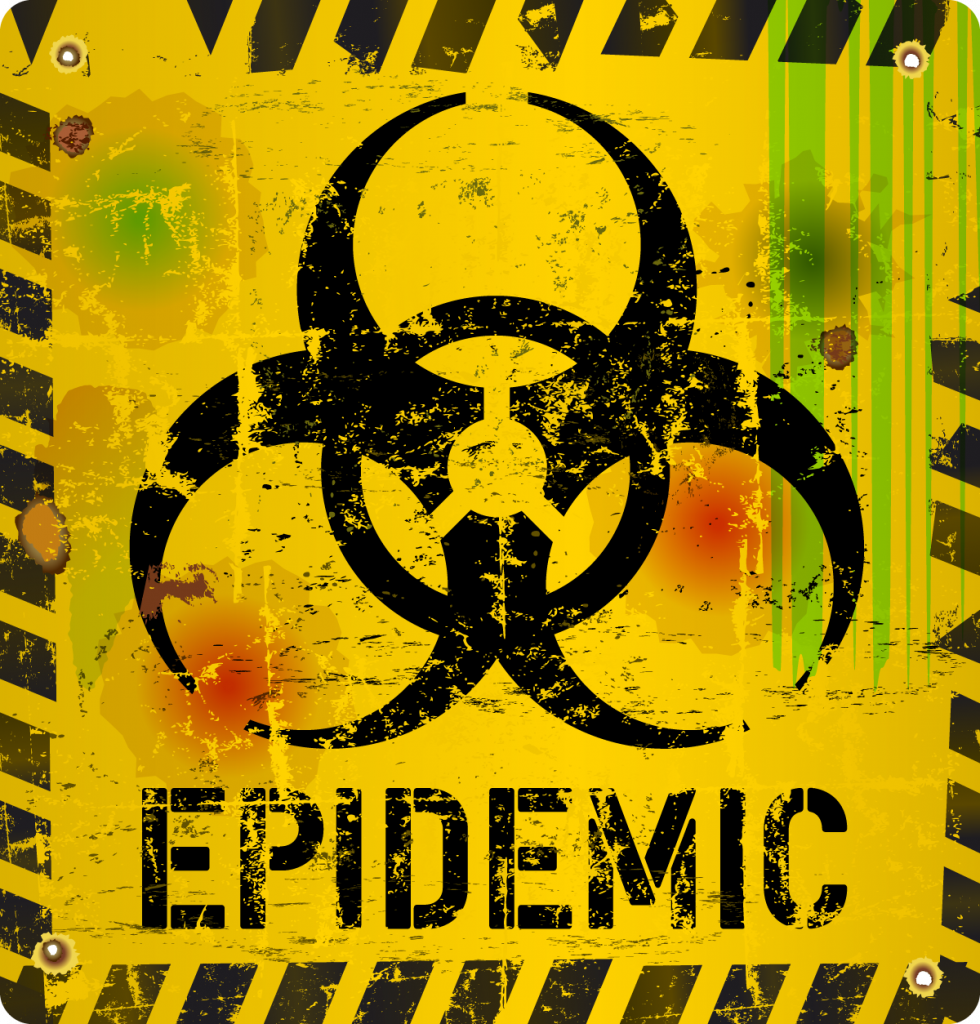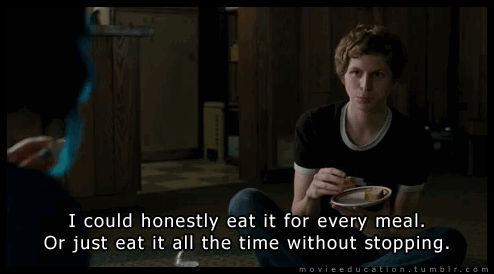Header photo license for use through Shutterstock.
So, the other day I had a really random thought: why don’t you see more zombies with missing or no teeth in zombie apocalypse tv/movies?
Sure, some ghouls are pretty “fresh,” so to speak, but in the case of the more, um, “ripe” specimens, if one is following the logic of the genre, it seems odd. The gums play an important role in holding our teeth in our mouths. We all know that if we neglect our gums, they recede, and we’re at risk for tooth decay and tooth loss. I would think this process would likely be even more pronounced in a body where everything else is rotting, as well as the utter lack of any kind of hygiene whatsoever. Ever seen a classic zombie brushing it’s teeth, let alone flossing? Yeah, me neither. On top of that, zombies chew through some pretty tough stuff when eating folks and animals raw, especially when the intended meal is still very much alive and kicking. You’d think all that wear and tear in addition to inevitable decay of teeth and gums would lead to seeing more toothless zombies in movies and tv, but I guess that would ruin all the “fun.”
I shared my musings in a social media post, and a friend then made the mistake of asking me what my take was on “fast zombies” vs “slow zombies.”
Well, that’s a loaded question, but one to which I’ve actually given some thought. Comes with the territory of being prone to anxiety, with an overly active imagination and a Meyers-Briggs “J” that should probably be in bold font. Basically, I like to work through completely fictional and unlikely scenarios, using logic and science, to provide a semblance of reassurance should it all hit the fan.
This is all theoretically speaking, of course, because ZOMBIES ARE NOT REAL; however, it would largely depend on the mode of infection we’re talking about, and how that would likely impact their physiology and executive function.
The Quick and Not so Undead

In the case of living people with otherwise functioning bodies, who have become infected by a virus or some other biological agent, a la 28 Days Later, and maybe the movie version of World War Z*, then I could see fast zombies being a possibility. It’s entirely possible such an infection could result in increased adrenal gland activity, a supression of the parts of the brain that deal with behavior regulation and an increase of activity in the parts of the brain that deal with aggression and the “fight or flight” response (in this case, emphasis on “fight”). Other illnesses and substances that have a similar effect would be the rabies virus, methamphetamines, and PCP (“Angel Dust”). If the virus in question had a similar impact on the brain and central nervous system this could result in “zombies” being lethally aggressive, potentially fast (depending on size and body condition), seem to have increased strength, and even a much higher resistance to painful stimuli. This could result in requiring quite a lot of manpower and/or firepower to incapacitate the assailants.
Even so, I think I think zombies of this type would burn our quickly. Viruses like rabies inevitably end up killing their host, as replicating and infecting more hosts is the chief end rather than any long-term symbiosis with the current host. A person infected with something akin to the rabies virus, or some other virus affecting behavior and higher executive function like the “rage virus” in 28 Days Later, would be dangerous for all the reasons listed above; however they’d very likely quickly fall prey to normal human isues like dehydration, malnutrition, and even adrenal exhaustion. They’d also be at an increased risk for opportunistic infection from wounds received in the course of going about their mindless rampaging. Then of course there’s the ever present risk of getting shot several times by some doomed soccer mom who hasn’t completed a good weapon’s training course, and can’t seem to find center mass, let alone a clean head shot. Even if she doesn’t kill them outright before being consumed, chances are they are going to die fairly quickly from the bullet wounds getting infected, and from blood loss.
Basically, the odds are stacked against them. Even if they escape eradication at the hands of the more apocalypse savvy uninfected, any increased strength, speed or deadly cunning would likely be short-lived (ha!) at best, as the body succumbs to the usual things that come with being sick, dehydrated, malnourished, and with untreated wounds. Every dog has his day…even Cujo…but, in the case of living zombies with some sort of virus, at most you’re probably looking at a 3-7 day lifespan.
Because you’re not likely to be able to outrun them, or best them in a physical confrontation, any sort of weapon that allows you to strike from a distance is probably your best bet. Because of the temporary increase in stamina and pain tolerance, you’d waste a lot of ammo trying to effectively stop them with a center mass hit. Instead I’d stick with the tried-and-true “aim for the head and destroy the brain” approach, just to be safe. Any sufficiently traumatic brain or spinal cord injury would probably incapacitate, if not end them, because it would destroy their motor function. For this reason decapitation would also likely prove effective.
*While the book version of Word War Z was pretty clear about it’s zombies being undead, and depicted the undead as the classic dimwitted, but dangerous shamblers, I wasn’t entirely clear on whether the insanely fast zombies in the movie version were actually undead, or just people sick with a super scary virus.
The Quick and Undead? Nah.
In more recent media depictions we encounter fast, yet definitely dead zombies. Notable examples of this type of zombie in cinema include Zombieland and Train to Busan. These zombies are definitely people who have died and become reanimated, but are also super fast, and harder to avoid. I happened to love both of of those movies; however, while I can temporarily suspend disbelief about reports that the “unburied dead are coming back to life, and seeking human victims” (RIP, George Romero), I find the whole fast zombie thing a little “hard to swalow,” so to speak. Here’s why.

Similar to what I described with the living zombies, the long-term threat level would likely diminish over time, but for a different reason. Namely, they’re dead and rotting. The natural decomposition progression, as well as additional decay brought on by fungus growth attracted to decomposing matter would likely ultimately render the “corpsified and gross” (RIP Wash, keep soaring you beautful ginger leaf) and consequently increasingly weak and virtually harmless in a relatively short period time. You gotta have functioning muscles and tendons to snag and consume the living, after all.
It’s my conclusion that these types of zombies would almost assuredly be slow. And I mean the “OMG, HOW in hell did that person not escape by merely walking away at a brisk pace?” kind of slow.
If up against your classic shambling undead zombie, seriously, just be aware of your surroundings, don’t let yourself get cornered, and keep up some sembliance of cardio vascular fitness (Zombieland has a full list of handy tips). Besides, we all know the living humans are the biggest threat in a zombie apocalypse anyway. It’s kind of the point of the genre. However, if you’re super slow, injured, or otherwise impaired physically, or maybe just really unobservant, and you find yourself cornered by one of these types, I’d be safe and specifically for the base of the skull, with whatever implement of destruction you have handy. That or just try to blend in…seriously, zombies are kind of dumb.

The conventional wisdom of “just destroy the brain” doesn’t really work for me, logically. In an undead type zombie, the larger areas of the brain which deal with emotion, reasoning, creativity, and problem solving are obviously impaired if not totally inactive, and are probably turning to mush like the rest of the soft tissue. Because this type of zombie thought process seems to be virtually entirely comprised of “walk, eat, go toward fire in case there’s food, go toward sound in case there’s food, walk, eat” my hunch is that the part of the brain that’s still running the show is in the the brain stem. They don’t even have primitive “fight or flight” impulses going on. For this reason merely aiming for the gray matter may not actually have the stopping power you’d require to survive. Don’t waste time on that. Instead try to destroy the lower posterior areas of the brain. That would be the most efficient and effective method for stopping that type of zombie.
Not so fast…
Because there are always exceptions, you can’t just safely assume you’re only dealing with a purely biological living zombie, or an undead reanimated zombie. There is a third, more terrifying option.
Let’s say evidence immediately suggests your assailant is in fact a reanimated corpse. Perhaps you saw them die and/or attended their funeral recently, or their appearance suggests they’re feeling “less than fresh.” If you also notice that your new corpse friend’s motor skills seem just hunky-dory if not enhanced, and they definitely seem “aware” and able to think, then chances are you’re dealing with something else entirely, and far more insidious.
This type of undead is in all liklihood something being acted upon by a malevolent supernatural force, like Satan, demons, or evil spirits from an old tribal burial ground, and therefore scary as hell (pun intended). Examples would be beings like the vampires in ‘Salem’s Lot, or perhaps more analogous, the not-so-dearly-departed pets and people in Pet Sematary. In his novels dealing with this kind of threat, Stephen King often describes the undead as having a dark “intelligence” in their eyes, and access to knowledge the person wouldn’t have had when alive. This of course makes them a LOT more dangerous than some mindless corpse, and you have to throw the usual zombie rule books and conventional wisdom out of the window.

If you start noticing more and more friend and neighbors just kind of disappearing, and then only ever showing up after sundown, there are a number of thoughts on what is an isn’t effective. Methods and suggestions vary, and you don’t want to put too much stock in one set of lore only to find out it’s so much hooey. Best to cover all your bases.
Of course the first rule of thumb is to be indoors by sundown. Forget “nothing good happens after midnight.” Trust me, NOTHING good will be happening after 5-7pm depending on time of year, and you do not want to be part of any “night life” currently gaining popularity in your town. Definitely don’t let friends who have been losing time, and suffering from some mystery illness to sleep it off in your house, in case they take that as a perpetual invitation in the future. And above all else, never, EVER let anyone in if the request is being made outside an upstairs window. You’ll thank me.
While you’re being inhospitable and a homebody, you needn’t be idle or bored. You’ll should have a couple new hobbies to keep you busy, like woodworking (making stakes, Ash is apparently a favorite), online shopping (buy crucifixes in bulk), and I’d also highly recommend getting right with God.
Marvel (RIP, Stan Lee) would recommend allying yourself with an old dude with technical skills, especially if they can engineer such technological marvels as UV light emiting weaponry. A silver bladed katana also appears to be quite effective, so bonus points if you’re already into metallurgy, or martial arts involving weapons and can add one of those bad boys to your survival kit.

For the non-vampiric, supernaturally undead, King appears to be of the opinion that standard veterinary euthanasia drugs work quite effectively. My guess is that a more straightforward “stop the body, deprive the spirit of it’s vehicle” methodology applies to this variety, so anything that would kill a person would probably work. Just don’t underestimate them, because they can be crafty and definitely have a well-developed survival instinct to go along with their new-found homicidal tendencies.
In either case, I’d be hedging my bets and also indulging my love of garlic like I want to die alone.
Thus ends my thesis on the probability of zombie speed and longevity as it correlates to their threat level and stamina. May none of us ever have need to put these theories to the test.


